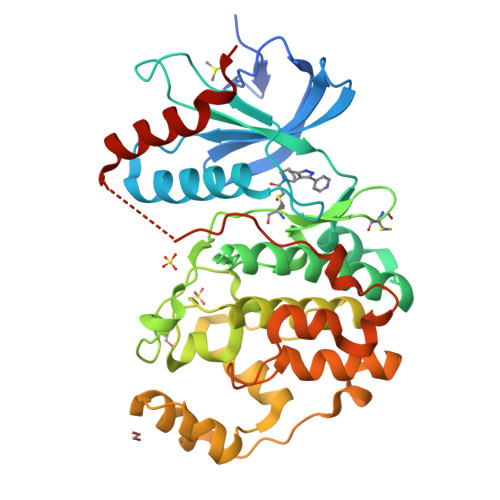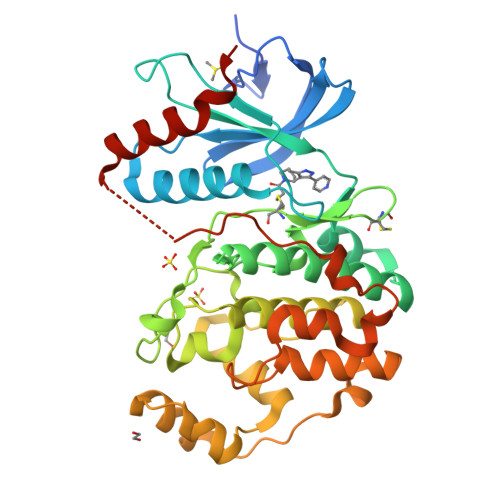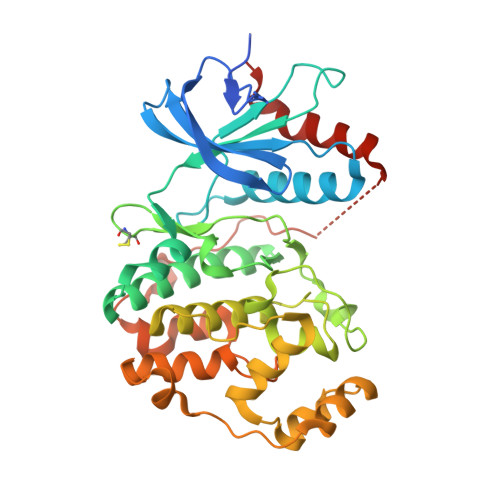X-ray Screening of an Electrophilic Fragment Library and Application toward the Development of a Novel ERK 1/2 Covalent Inhibitor.
St Denis, J.D., Chessari, G., Cleasby, A., Cons, B.D., Cowan, S., Dalton, S.E., East, C., Murray, C.W., O'Reilly, M., Peakman, T., Rapti, M., Stow, J.L.(2022) J Med Chem 65: 12319-12333
- PubMed: 36101934
- DOI: https://doi.org/10.1021/acs.jmedchem.2c01044
- Primary Citation of Related Structures:
8AO2, 8AO3, 8AO4, 8AO5, 8AO6, 8AO7, 8AO8, 8AO9, 8AOA, 8AOB, 8AOC, 8AOD, 8AOE, 8AOF, 8AOG, 8AOH, 8AOI, 8AOJ - PubMed Abstract:
Fragment-based drug discovery (FBDD) has become an established method for the identification of efficient starting points for drug discovery programs. In recent years, electrophilic fragment screening has garnered increased attention from both academia and industry to identify novel covalent hits for tool compound or drug development against challenging drug targets. Herein, we describe the design and characterization of an acrylamide-focused electrophilic fragment library and screening campaign against extracellular signal-regulated kinase 2 (ERK2) using high-throughput protein crystallography as the primary hit-finding technology. Several fragments were found to have covalently modified the adenosine triphosphate (ATP) binding pocket Cys166 residue. From these hits, 22 , a covalent ATP-competitive inhibitor with improved potency (ERK2 IC 50 = 7.8 μM), was developed.
Organizational Affiliation:
Astex Pharmaceuticals, 436 Cambridge Science Park, Cambridge CB4 0QA, United Kingdom.





















